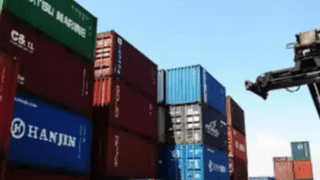
According to economists from Nomura, India’s growth cycle may have already peaked, and a slowdown is taking place across the country. While the Indian government remains optimistic about the economy’s recovery, Nomura economists Sonal Varma and Aurodeep Nandi believe a significant economic downturn is on the horizon.
Nomura’s comments came after data from India’s statistics ministry showed GDP growth had declined from 13.5 percent in April-June to 6.3 percent in July-September, primarily due to a favourable base effect. Despite the government’s Chief Economic Adviser, V Anantha Nageswaran, stating that the country is on track to grow by 6.8-7 percent in FY23, Nomura’s economists believe India’s growth rate cycle has peaked and a slowdown is imminent.
Nomura’s India Normalisation Index supports their argument, showing that a broad-based slowdown has been taking place since April-June’s peak. Varma and Nandi expect India’s growth to fall to 5.2 percent in FY24 from around 7 percent in the current financial year. They also believe that while lower inflation may support private consumption in the coming months, the lagged effects of tighter financial conditions and weak global demand will negatively affect investment and exports.
Nomura’s consumption tracker supports their prediction, showing that consumption has fallen from around 11 percentage points above its pre-pandemic level in April-June to around 5 percentage points in July-September. In October, it declined even further to just below its pre-pandemic level. Despite anecdotal evidence of bumper festive season sales, consumption remains worryingly K-shaped. Rural wage growth remains largely subdued, and consumer sentiment remains below pre-pandemic levels.
Furthermore, exports have also experienced a significant decline, contracting by 17 percent YoY in October, coming in below $30 billion, the first time since February 2021 that monthly exports have fallen on a YoY basis. Nomura sees this as a sign of external weakness and argues that their base case of developed countries experiencing a recession in 2023 is playing out. As global weakness hardens in the first half of 2023, Nomura expects it to play an outsized role in driving a domestic slowdown in the coming quarters.
The impact on India may be felt in more ways than one. While exports will suffer, Nomura expects investments may also be at risk as the capex cycle has historically been in sync with the global cycle. Further, the Reserve Bank of India’s (RBI) rate hikes will weigh on growth. Nomura expects the Monetary Policy Committee (MPC) to increase the repo rate by 35 basis points on December 7 and by 25 basis points on February 8, although the latter rate hike is a “closer call”. So far in 2022, the MPC has raised the repo rate by 190 basis points to 5.9 percent.
Nomura’s outlook is particularly concerning as the Indian economy has been relying heavily on the service sector to drive growth. As the post-pandemic catch-up in services is largely complete, the lagged effects of tighter financial conditions and weak global demand are expected to negatively impact India’s economy.
The Indian government has taken steps to revive the economy by increasing public expenditure, supporting infrastructure investment, and improving the business environment. However, Nomura believes that the impact of these measures is not enough to offset the external and internal headwinds that are already taking place.









